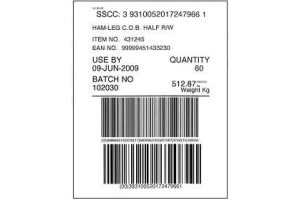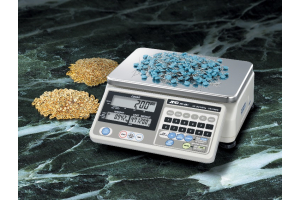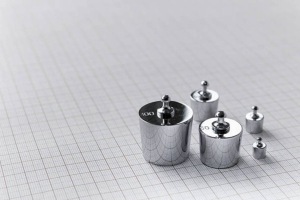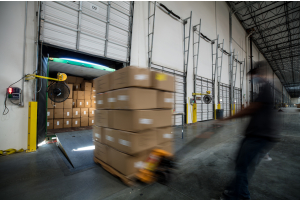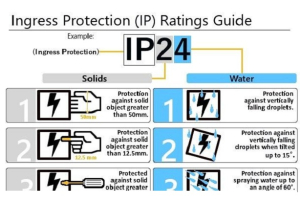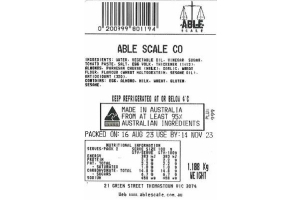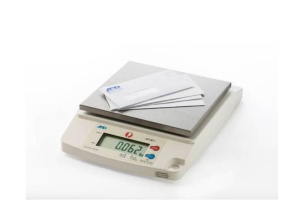
Test weights and masses are essential tools used in the calibration and verification of weighing equipment, ensuring these devices operate accurately and consistently. Employed across various industries — including, but not limited to, the pharmaceutical and food industries — test weights help maintain the precision of scales and balances, which is crucial for product consistency, safety, and compliance with regulatory standards.
This practice not only upholds the integrity of the measurement process but also significantly impacts the overall quality of output, reinforcing trust among consumers and regulatory bodies alike. In essence, the accuracy provided by test weights directly influences the quality and reliability of products, playing a pivotal role in quality control and assurance protocols. Regular monitoring of your weighing equipment with test weights is crucial, as measurement accuracy may vary over time. These checks can identify any deviations, maintaining the equipment's precision within acceptable tolerance levels. Weighing instruments falling beyond these tolerances can significantly affect accuracy, potentially compromising the quality of your products and services. In certain industries, weight inaccuracies might lead to product recalls, financial setbacks, and possibly even consequential litigation, thereby tarnishing a brand's reputation. Test weights and weight scales are integral to many industrial calibration processes, as they consistently ensure measurement accuracy. By regularly using test weights to check weighing instruments, businesses can detect and correct any discrepancies before they affect the quality of the product or service.
Types of Test Weights
Test weights are critical for ensuring the accuracy and reliability of weighing equipment. They come in various materials and models, each suited to different environments and levels of precision.
Class 1 Stainless Steel Masses are highly durable and resistant to corrosion, making them suitable for a wide range of environments, including those prone to moisture or chemical exposure. They are often used in pharmaceuticals, food processing, and laboratory settings where hygiene and cleanliness are of utmost importance.
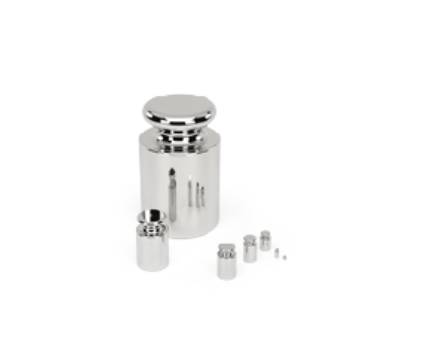
Brass Test Masses are known for their good corrosion resistance and distinctive appearance. They are less prone to sparking than other metals, making them safer for use in potentially explosive environments. Brass weights are typically used in less corrosive environments and where high precision is not as critical.

Class 3 Iron Masses are robust and ideal for heavier weight requirements, commonly used in industrial and commercial settings for calibrating large-scale weighing systems like platform scales and pallet scales. Their durability makes them suitable for harsh environments. However, they are more susceptible to corrosion if not properly maintained.
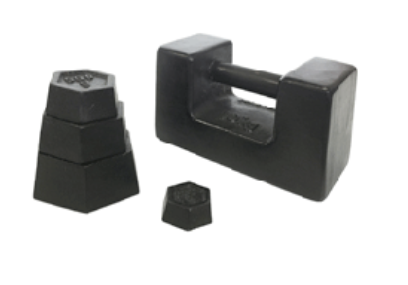
Each type of test weight serves a specific purpose, with material choice influenced by the environment, required precision level, and specific application. Able Scale can provide trade certifications, QA test reports, Regulation 13 and NATA reports on all our range of weights. Please contact us with your specifications.
What is NATA Certification for Test Weights
NATA — which stands for the National Association of Testing Authority — is an organisation that provides accreditation for laboratories and testing facilities in Australia. NATA accreditation is recognized both nationally and internationally as a reliable indicator of technical competence and compliance with international standards. Essentially, NATA certification is a mark of excellence and reliability in measurement and testing; a NATA certification signifies that a product has met rigorous standards for accuracy and reliability. This certification is important because it ensures that the weighing instruments are capable of performing to the specified precision, which is essential in industries where exact measurements are critical, such as pharmaceuticals, food production, and scientific research. NATA's accreditation process involves thorough testing and evaluation of the equipment against established standards, providing an independent validation of its performance.
Test Weights Classification - What Classes of Weight Do You Need?
In both laboratory and commercial settings, the demand for scales that reach or surpass a specific accuracy threshold is common. Equipment must be appropriate for its intended use, considering various aspects of its design such as capacity, scale divisions, scale division value, minimum capacity, and computational functions. Such guidelines also detail the classification of scales and their suitable applications. Accuracy classes serve two primary purposes; they identify the appropriate uses for a scale, and they define the tolerances applied during scale testing. This classification system ensures that scales are used within their accuracy limits, promoting reliability in measurements across diverse applications.
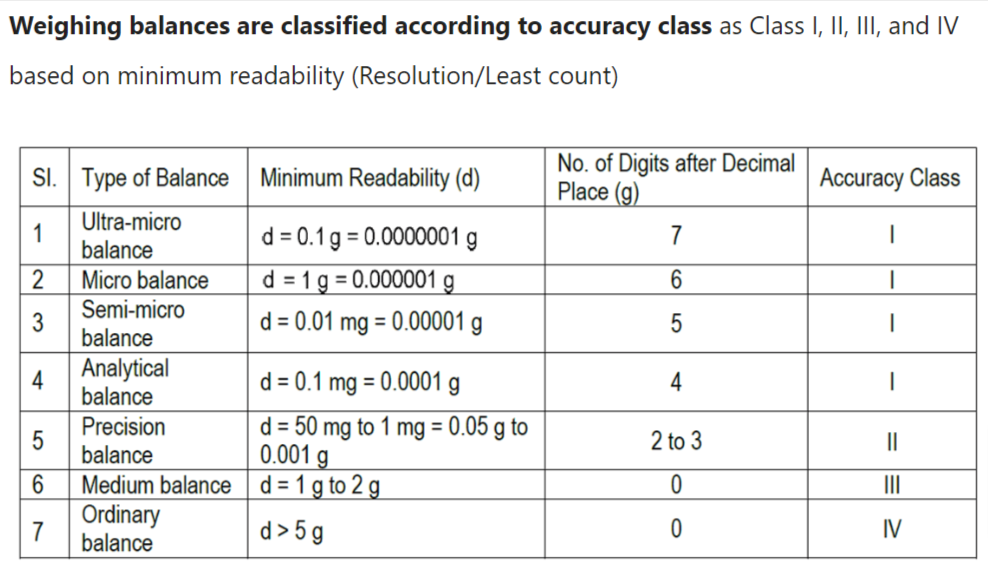
Each class of scale is designed to meet specific requirements for accuracy and use-case scenarios, ensuring that users can select a scale that fits their precise needs for measurement and regulatory compliance.
Class I: Class I scales, such as the Touch screen Analytical Balance - Ohaus Adventurer AX, are high-precision balances typically used in laboratory settings where very small mass differences need to be measured accurately. Class I scales are suitable for analytical purposes where the weight measurements need to be extremely precise, often down to micrograms. They are crucial in pharmaceutical, scientific research, and any application requiring high accuracy.

Class II: Scales classified as Class II, such as the Trade Approved Precision Balance -A&D GX Series, are used where moderate precision is required, such as in compounding pharmacies, jewellery stores, and laboratory testing that doesn't require the extreme precision of Class I scales. They are precise enough for weighing small to medium-sized items where the margin of error is slightly more tolerant than that of Class I balances but still needs to be relatively small.

Class III: This class is commonly found in commercial and industrial settings where larger quantities are weighed, and the precision requirements are less stringent than in laboratory settings. Class III scales — such as the Stainless Steel IP68/69K Platform Scale - Ohaus Defender 6000 — these scales are commonly used in retail, shipping, manufacturing, and the sale of goods by weight. They are designed to handle heavier loads with a larger margin of error acceptable. These scales are often seen in the form of platform scales, price computing scales, and scales used in food service and retail.

What Type of Weight Do I Need - Class I, II, or II?
The appropriate precision weight class for your balances and scales—Class 1, 2, or 3—depends on the specific accuracy requirements and application of your weighing process. For tasks demanding high precision, such as analytical measurements in laboratories where the smallest variance matters, Class 1 weights are almost certainly necessary. If you're working with slightly less sensitive measurements, such as those needed in compounding pharmacies or jewellery weighing, Class 2 weights offer a suitable balance of precision and practicality. For general commercial, industrial applications, or when weighing larger quantities with a broader tolerance for variance, Class 3 weights are suitable, as they support the calibration of scales used in retail, shipping, and manufacturing. Choose your weight class based on the level of precision required by your weighing equipment and the intended use.
Choosing the Appropriate Test weight For Your Balance
Calibration Weight Class - Selecting the correct test weight class is essential for ensuring your balance meets the required degree of accuracy for your specific processes. Read the information above regarding weight classes, and align the weight class with your process tolerances to maintain accuracy and compliance.
Material - The material of your test weight also plays a crucial role in its suitability for your balance. Stainless steel is preferred for its durability and resistance to corrosion, making it ideal for most laboratory and industrial settings. Brass weights, while less resistant to corrosion, are suitable for less aggressive environments and are often used for their non-sparking properties. Consider the environmental conditions and the nature of substances the weights will be exposed to when choosing the material.
Shape - The shape of a test weight affects its handling and stability on the balance. Cylindrical weights with a knob are easy to handle and place on scales, making them ideal for frequent use in calibrating balances with tight accuracy requirements. Flat weights may be suitable for larger scales used in industrial settings where precision is less critical. For microbalances and ultra-micro balances, specific shapes designed for minimal air resistance might be necessary. Choose a shape that not only meets the accuracy needs but also complements the balance platform and usage frequency.
What if I find a weight discrepancy?
Whilst having your own test weights or masses is great for day to day checking it should never replace a professional calibration check. Most weights need to be retested every 12-36 months dependent on type, and we recommend that your scales or balances are at least tested annually.
If you do detect discrepancies with your weights and scale calibration then you will need to have your equipment professionally recalibrated with approved test weights and the correct calibration procedures. Our service department can book in on-site service to assist you with your calibration requirements. Please contact us for assistance.
Have questions about our products and services?
We are here to help. Please fill in our online enquiry form below, and we will respond to you within the next business day.



 Call us Today
Call us Today

